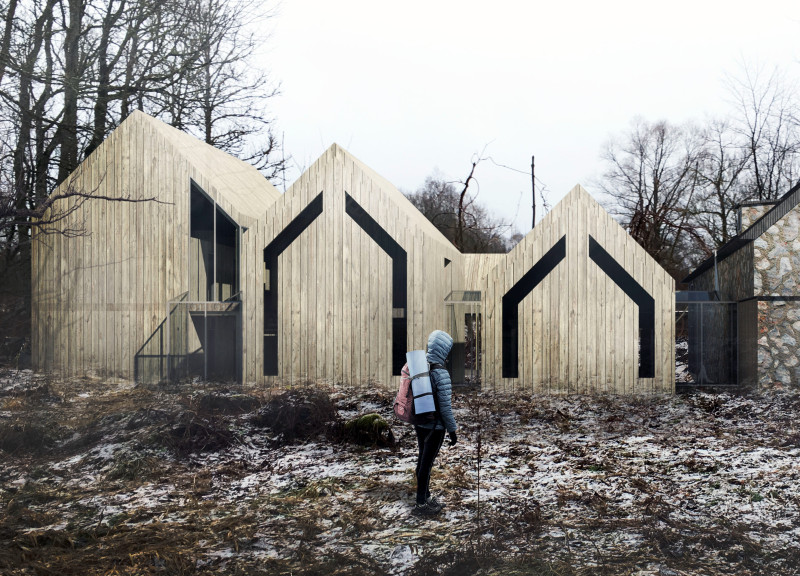5 key facts about this project
## Project Overview
Located in a predominantly forested region of Latvia, this design addresses the ecological, social, and cultural characteristics of the area. The intent is to promote sustainable living while fostering connections with local culture and conservation initiatives. The project features a series of interconnected buildings that prioritize energy efficiency and create a dialogue with the surrounding natural environment.
### Architectural Form and Material Strategy
The design draws inspiration from vernacular architecture, employing a series of varied rooflines that collectively evoke the character of a traditional village. The different heights and lengths of the buildings reflect an organic adaptation to diverse family needs over time. The selected materials underscore both ecological responsibility and cultural heritage. Wood serves as a primary material for insulation and aesthetic value, while corten steel reinforces structural integrity. Glass is utilized to enhance transparency, inviting natural light and establishing a connection with the landscape. Durable concrete provides robust support, and fiberglass wool is incorporated for soundproofing and insulation, contributing to overall comfort.
### Integration with Landscape and User Experience
The project is strategically set within the forest, enhancing the user experience by promoting a strong connection to nature. A glass corridor links various functional spaces, acting as a circulation route and communal area that fosters interaction among residents. The layout includes a mix of accommodation types tailored for individuals and couples, as well as communal facilities such as kitchens and dining rooms that encourage social engagement. Designated wellness spaces for yoga and meditation further align with the architectural goals of harmony with the natural environment. Outdoor elements, including vegetable gardens and fruit orchards, reinforce community involvement and education in sustainable practices, allowing residents to actively participate in the ecology of the region.


























